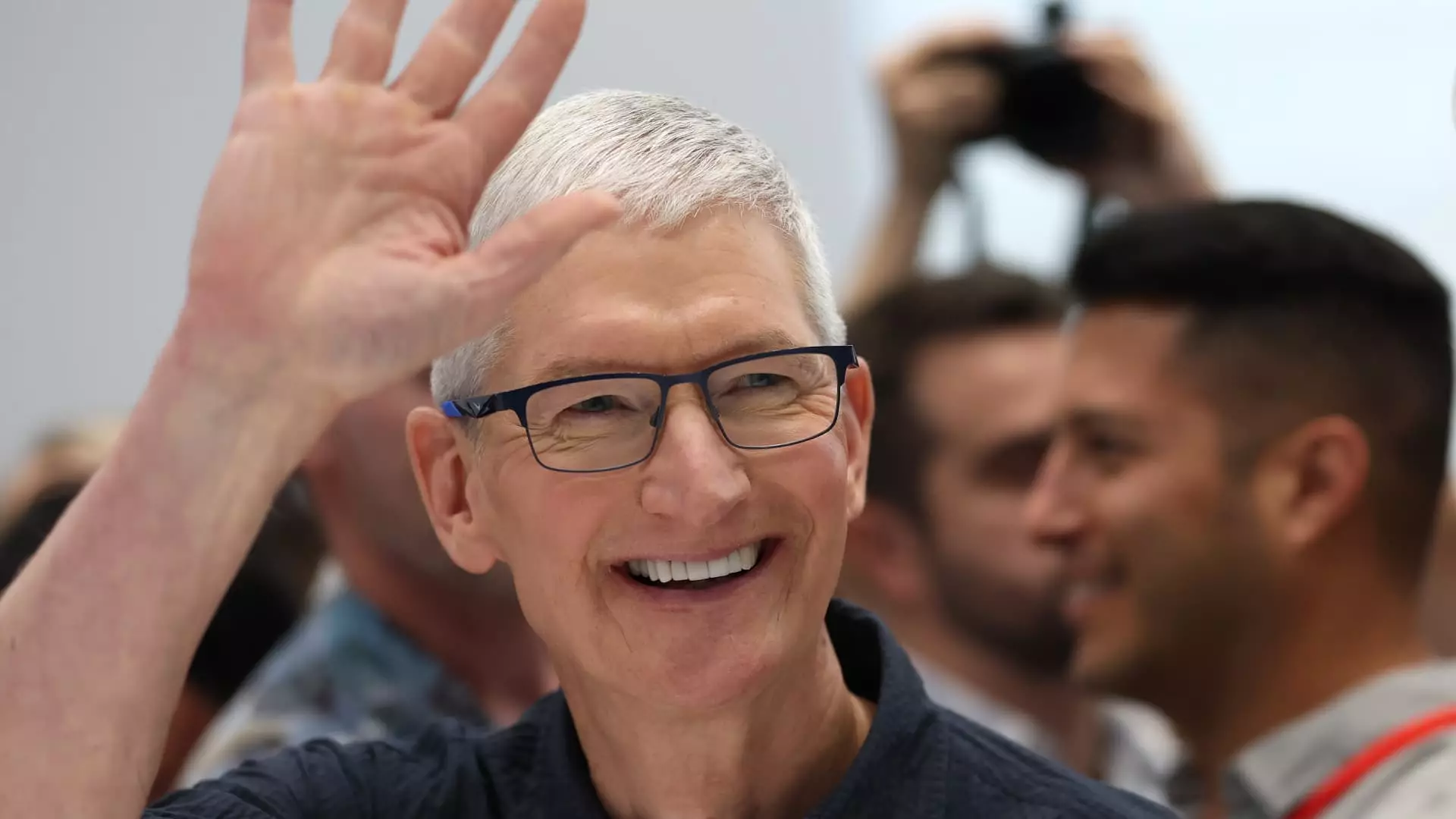Apple Inc. appears to be staging a remarkable comeback in the stock market, recently achieving its highest share price ever, a notable feat that comes amidst a backdrop of skepticism from financial analysts regarding the sales prospects of its latest iPhone model, the AI-capable iPhone 16. The juxtaposition of soaring stock prices and cautious analyst sentiments provides a fascinating lens through which to explore the intricacies of consumer demand, market expectations, and technological advancements that shape Apple’s present and future.
A pivotal factor contributing to Apple’s recent stock surge can be traced to new market research data indicating robust demand for the flagship product, the iPhone. According to the International Data Corporation (IDC), shipments of iPhones grew by 3.5% year-over-year, reaching 56 million units in the third quarter. This number surpasses analysts’ projections of 50 million, creating a potential revenue upside estimated between $2 billion and $4 billion, as reported by Morgan Stanley.
This steady growth solidifies Apple’s position as a formidable player in the smartphone arena, with a market share of approximately 17.7%, just trailing behind Samsung’s 18.3%. Nabila Popal, the research director at IDC, attributes this quarter’s success largely to significant marketing efforts surrounding the iPhone 15, especially in light of the forthcoming release of Apple Intelligence—a suite of generative AI tools expected to enhance user experiences.
As we transition into the holiday season, Apple is well-positioned to benefit from a wave of consumer upgrades. Many customers look to transition from older models, such as the iPhone 12 and 13, to the new AI-enhanced devices. Popal notes that even with a staggered rollout of new technologies, the allure of a future-proof smartphone remains a strong motivator for many buyers.
This upgrade cycle could very well drive Apple’s sales into new territory, defying the negative sentiment circulating among certain analysts on Wall Street. There is a pervasive belief that the buzz around AI could elevate not just the appeal of the new devices but also consumer willingness to invest in more innovative, technologically advanced options.
Despite recent skepticism about the iPhone 16, Apple shares climbed to an intraday high of $237.49, slightly surpassing previous records from July. There is a palpable sense of optimism surrounding the stock, especially after the turbulent market conditions experienced in early August. Even with certain analysts expressing concerns about lowered shipping times indicating weak demand for the latest offerings, Apple has managed to maintain investors’ confidence.
The juxtaposition of Apple’s recent success against the backdrop of competitor Nvidia’s slight pullback reveals an interesting dynamic. Apple continues to preserve its status as the most valuable publicly traded company in the U.S., boasting a market capitalization of $3.55 trillion, compared to Nvidia’s $3.4 trillion.
Wall Street analysts remain divided in their outlook on Apple’s future. Although some have raised doubts regarding the sustainability of current demand trends, not all opinions are pessimistic. Evercore ISI recently highlighted Apple as a tactical outperform ahead of its upcoming earnings report, suggesting that modest performance may still yield substantial benefits for its shareholders.
Investor sentiment is inherently tied to the performance of Apple’s flagship products. Despite the ongoing skepticism regarding the iPhone 16, there exists a growing acknowledgment of the potential for an AI-driven upgrade cycle that could invigorate sales across the board. The IDC data appears to contradict the prevailing narrative, suggesting a more favorable market environment than analysts have anticipated.
Apple stands at a pivotal juncture, balancing on the edge of groundbreaking technology and consumer expectation. As the company capitalizes on year-over-year growth in iPhone shipments and the promising rollout of new AI tools, there’s an overarching belief that their stock remains poised for further upside. Jim Cramer succinctly encapsulated the sentiment by advocating for a long-term ownership strategy rather than short-term trades, suggesting that patience with Apple’s stock could well be rewarded as we transition into a new wave of technological innovation.
Investors and consumers alike will be watching closely as Apple navigates the complexities of market dynamics and consumer sentiment, setting the stage for an exciting conclusion to 2024. As Apple continues to push the envelope with technological advancements, its ability to adapt and innovate will remain paramount in shaping its future success.

